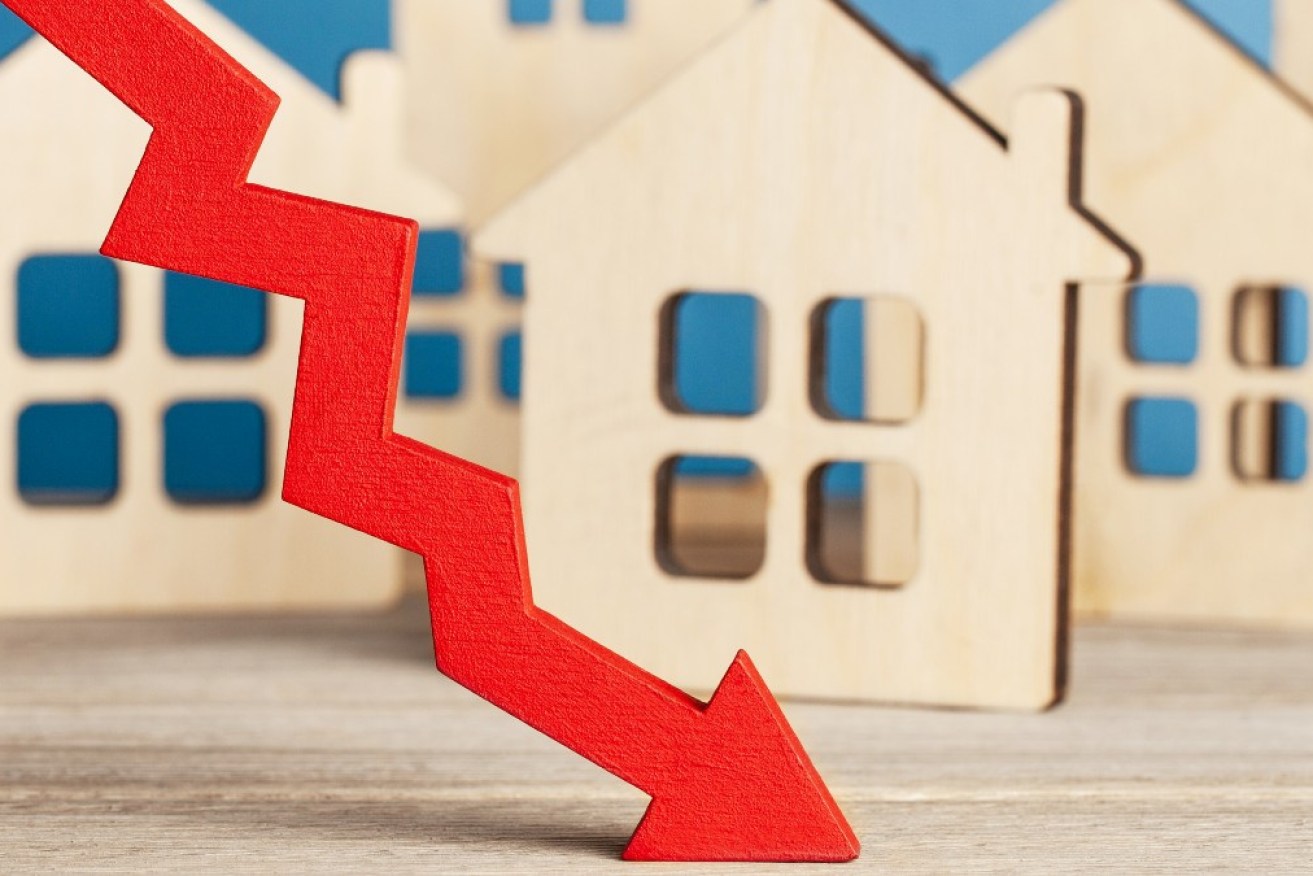Sydney and Melbourne house prices cool off


Property prices in Sydney and Melbourne are stabilising after a rollercoaster pandemic. Photo: Getty
National property prices rose by more than 22 per cent in 2021, but new data shows the housing boom in Sydney and Melbourne is running out of steam.
Figures released by CoreLogic on Tuesday show prices in December almost reached a standstill in Sydney (+0.3 per cent) and went slightly backwards in Melbourne (-0.1 per cent).
Analysts said the data suggested Australia had entered a two-speed property market, with prices flatlining in the country’s two largest cities but continuing to rise in smaller cities such as Adelaide (+2.6 per cent) and Brisbane (+2.9 per cent).
House prices continue to slow
CoreLogic research director Tim Lawless said national annual property price growth is expected to slow to between 5 and 7 per cent in 2022, down from 22 per cent in 2021, largely due to rising fixed mortgage rates and tighter lending policies.
He said Sydney and Melbourne will be the most affected, due to poor affordability and a flood of new houses coming onto the market.
Although prices rose faster in other capital cities in 2021, Sydney and Melbourne currently have the highest median property prices, with Sydney’s sitting at more than $1 million and Melbourne’s at just under $800,000.
“So clearly, affordability is becoming a lot more challenging in those larger cities where affordability was already quite challenging leading into the pandemic,” Mr Lawless said.
He said last year’s rise in prices had made life difficult for first-home buyers, who now face more than a decade of saving to reach a deposit.
But the December figures show the fastest price rises are likely in the rear-view mirror for Sydney and Melbourne.
Mr Lawless said the slowdown in the two biggest cities could partly be attributed to a rush of new listings.
He told The New Daily the number of new listings in Melbourne and Sydney were more than 30 per cent above the five-year average, similar to other markets.
But fewer houses are exchanging hands there compared to other markets with stronger price growth, such as Adelaide, Brisbane, and regional Queensland.
CoreLogic said these were the only three regions across the country “where there is no evidence of value growth slowing just yet, with the monthly rate of growth reaching a new cyclical high in December”.
Mr Lawless said although these markets will slow this year, they will continue to outperform the broader property market.
Lagging property markets playing catch-up
Strong interstate migration and better affordability meant prices rose faster in southeast Queensland, Brisbane, and Adelaide than they did in Melbourne and Sydney in 2021, according to AMP Capital chief economist Shane Oliver.
These areas are now playing catch-up after a decade of weaker growth compared to Sydney and Melbourne, without the added “baggage” of extended lockdowns, Dr Oliver said.
“They’re seeing interstate migration is positive, and property is more affordable in those [Adelaide and Brisbane],” he said.
Dr Oliver said it is likely that Melbourne property prices have already peaked in the current cycle, or will have done by the end of January, with Sydney prices to follow by the middle of the year.
He said the cities could even see prices fall 5 to 10 per cent by the end of the year or by 2023.
However, Brisbane and Adelaide appear to be “on a roll”, and there’s potential for Perth and Darwin to continue to recover, he said.
This will split the national property market into two speeds.
“You’re going to see this ongoing divergence between cities, and in the meantime regional Australia will remain in strong demand,” Dr Oliver said.
What could change the course of the market?
Although property experts generally agree on this year’s market predictions, nothing is set in stone, especially with the ongoing pandemic.
Mr Lawless said COVID-19 is always going to be a “wildcard”.
He said a return of restrictions, especially regarding property inspections and on-site auctions, would lead to a temporary disruption of housing market trends.
This was seen in Melbourne and Sydney, which experienced a surge in listings in December after people were unable to sell their properties in spring due to lockdowns.
“When the reopening occurred, suddenly there was a flood of listings in both of those markets, which led to a surge in supply relative to demand,” he said.
“That caused the weakness in auction clearance rates and, consequently, prices weakened.”
With more than 47,000 new COVID-19 cases across the country on Tuesday, Mr Lawless said consumer sentiment and housing market activity is “very highly correlated”.
“So if there is a dent in the way consumers are feeling about their household finances or their ability to hold a job, then that will probably flow through to housing markets on the downside as well.”








